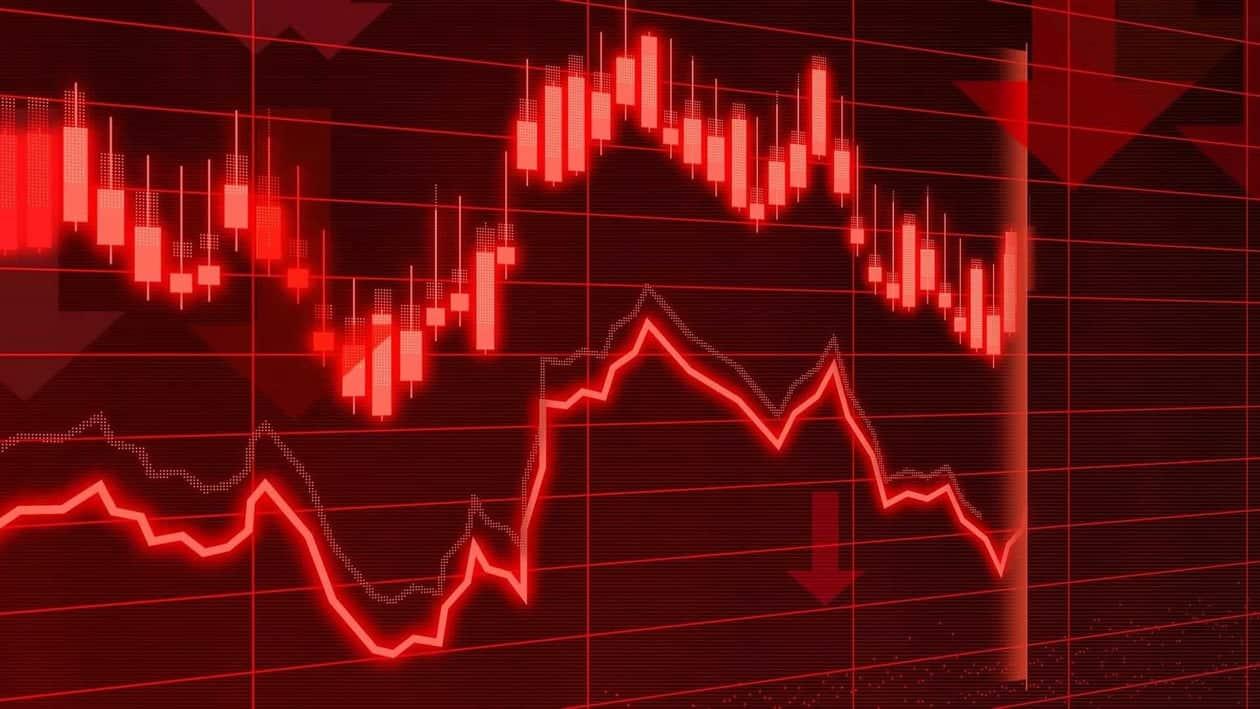Indian indices have been on a downward trajectory following global peers since the US Federal Reserve raised interest rates by 75 bps for the third consecutive time. Investors are concerned that the rate hikes by US Fed to tame inflation will drag major economies into recession.
Since Wednesday, September 21, the BSE Sensex has shed over 2500 points or 4 .3 percent. After 4 straight sessions of decline, Indian indices ended on in the red but flat today. Sensex ended at 57,107.52, down 38 points, or 0.07 percent in trade today while the Nifty ended at 17,007.40, down 9 points or 0.05 percent. Equity investors' wealth has tumbled by over ₹13 lakh crore in five sessions including today.
The soaring dollar as a result of aggressive monetary tightening, slowing economic growth and rising demand from cautious investors are causing turbulence in the global equity market, said market experts. This is creating mayhem in the domestic market led by a weakening rupee, elevated bond yields and pessimistic trends of Asian peers, they added.
Stocks
In this time, only 6 stocks in the Sensex have given positive returns while the remaining has been in the red. PowerGrid has lost the most, down 12 percent followed by Axis Bank, Tata Steel, IndusInd Bank, HDFC, Bajaj Finserv, NTPC, ICICI Bank, Kotak Bank, HDFC Bank, M&M, SBI and Maruti, all down between 5-9.5 percent.
Among gainers, HUL has risen the most, up 4 percent followed by Asian Paints, up 2 percent. Nestle, HCL Tech, ITC and Infosys were also in the green but mostly flat.
Meanwhile, in the BSE500 index, 45 stocks have fallen in double-digits in this period whereas of the 500 stocks, only 53 were in the green while the remaining 447 gave negative returns.
M&M Financial Services, Can Fin Homes, Fortis Health and India Cements have tanked over 15 percent each since last Wednesday.
Outlook and Strategy
"The dominant dynamic roiling equity and currency markets globally is the combination of relentless rise in the dollar and the sustained rise in US bond yields. So long as this trend continues, equity markets will be under pressure. FPIs turning big sellers in India ( ₹5101 cr in cash market yesterday) is an indication of the risk-off in equity in emerging markets. In the context of rising US bond yields, RBI will be forced to raise rates by around 50 bp on September 30th. This will be another negative for equity markets," said VK Vijayakumar, Chief Investment Strategist at Geojit Financial Services. In brief, except for falling crude there are no positive triggers for the equity market now, he added.
Vijayakumar cautioned that this is not the time to aggressively buy the dips. However, there is scope for selective buying in the broader market, he advised. There are stocks rising even in this weak market and these are signals of accumulation on strong fundamentals, noted the market expert.
Alok Jain, smallcase manager & Founder, Weekend Investing also explains the recent decline. "The global system has been in turmoil ever since the USA announced the end of QE and the FED raising the interest rate in the last 3 meets. This has resulted in a liquidity shock globally. Besides liquidity shock, the increase in interest rates is causing a demand shock with housing leading to a decline in demand. The mandate of the FED is clear – that is to stop inflation at any cost. The monetary system has been broken since 2008 has been somehow pushed along with repeated stimulus but now the outstanding debts have far exceeding the global GDP and increasing rates only risks a default contagion," Jain said.
However, he pointed out that India has been in a relatively sweet spot despite the hawkish environment but in sympathy has to increase rates to avoid capital outflow. The Reserve Bank has also sacrificed nearly 20 percent of the reserves in trying to defend the rupee but when the liquidity flows out of Emerging markets nothing really can stop the flow. The risk now is a currency contagion with the dollar strengthening on a daily basis, he advised.
Going ahead, for long-term investors there are opportunities to be had in such an environment, he stated. This is not the first or is likely to be the last crisis.
"If you are invested in good businesses and are following a framework for your investment, there need not be too much worry as once the dust settles, India should re-emerge as a very strong capital magnet. Staying with strength in the market remains one of our favourite ways to not predict the market yet ride the wave as and when we get it," advised Jain.
